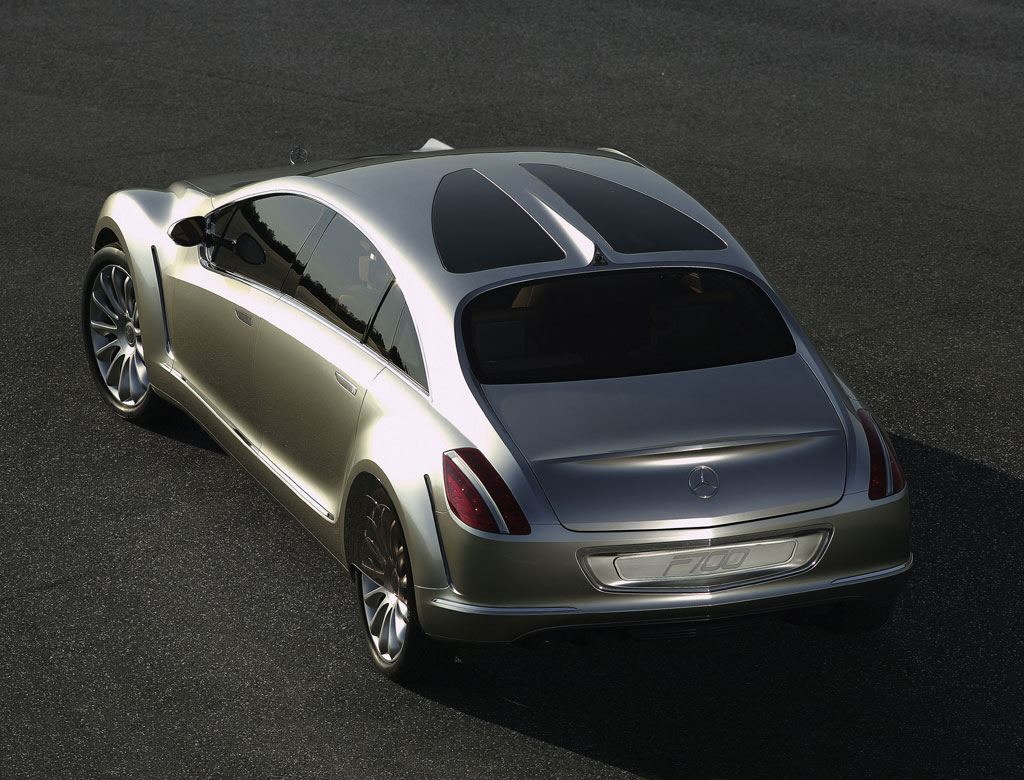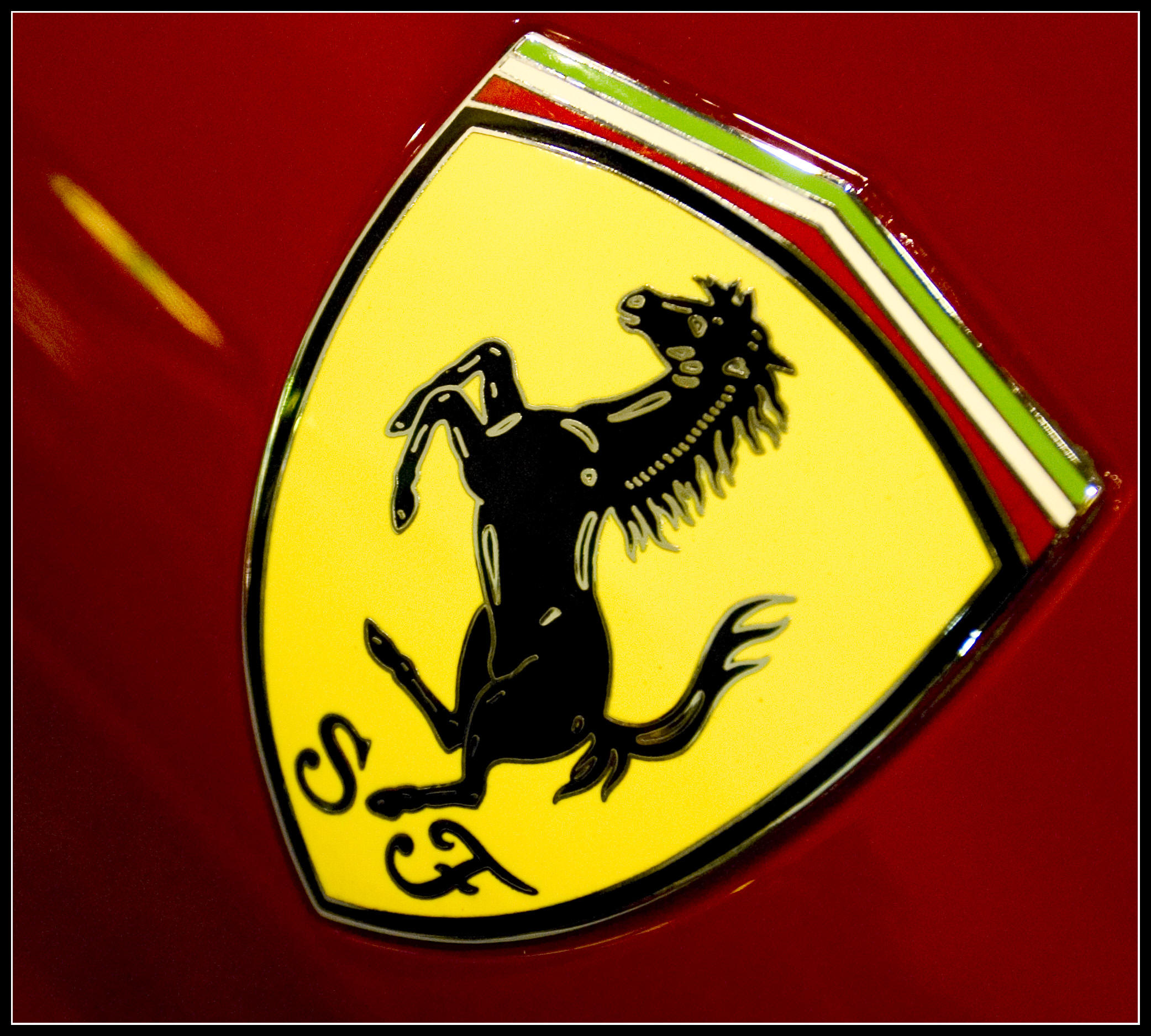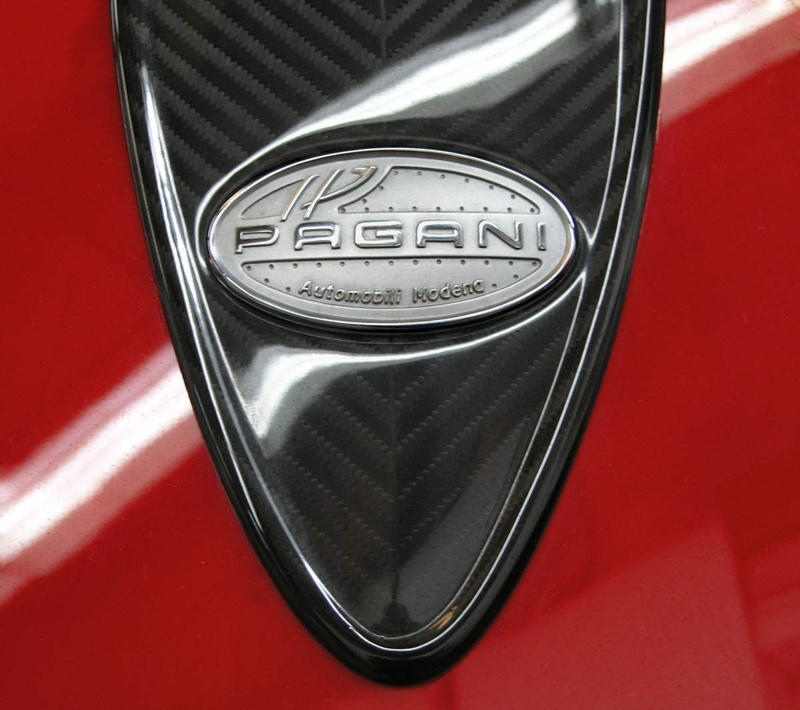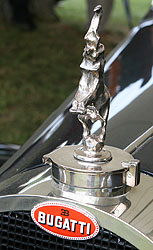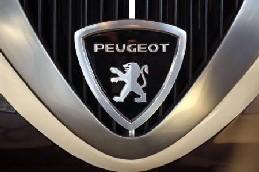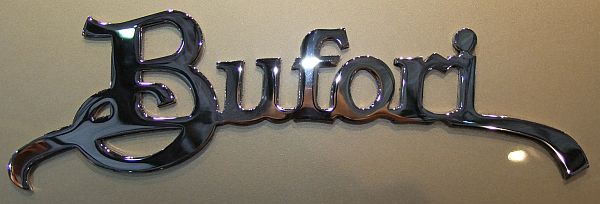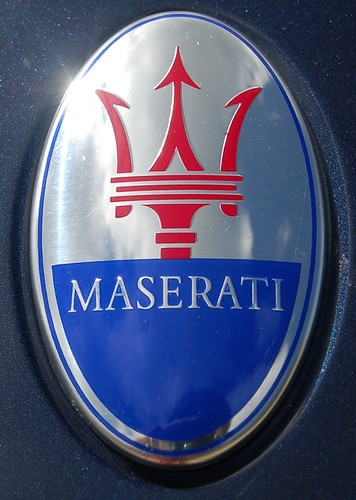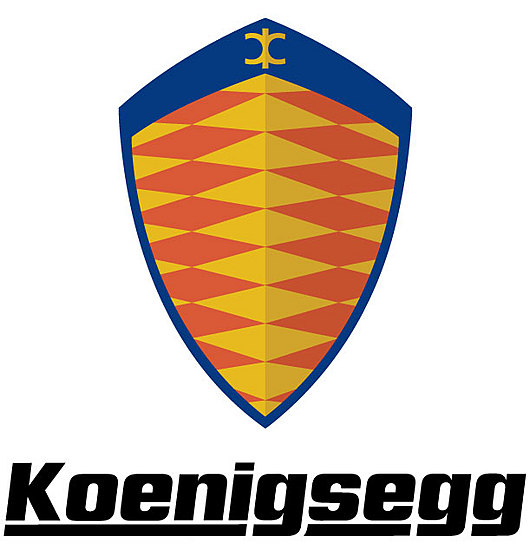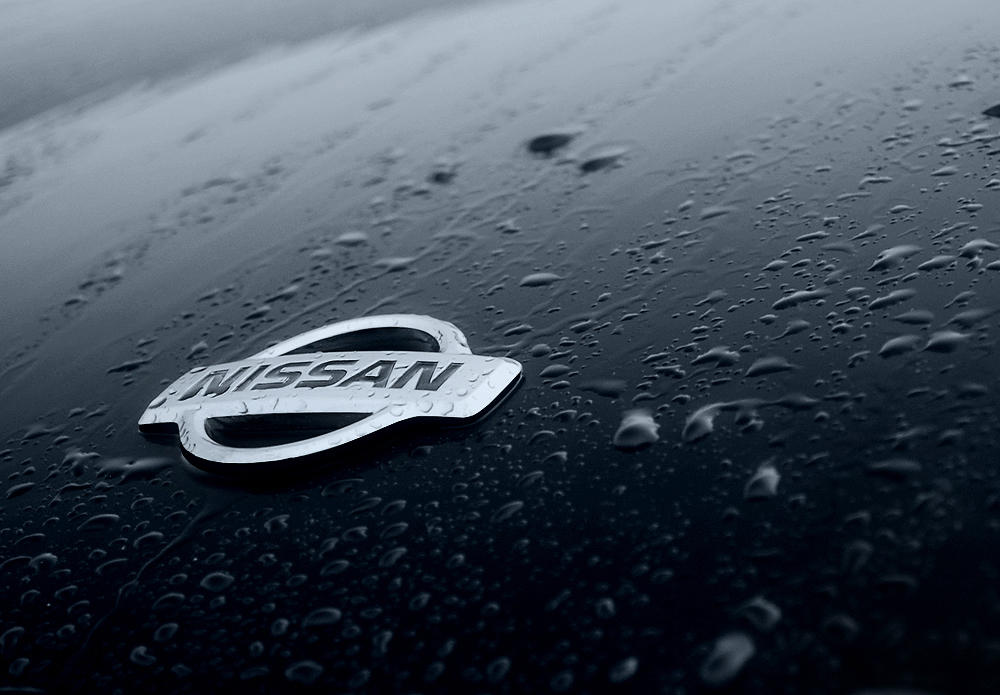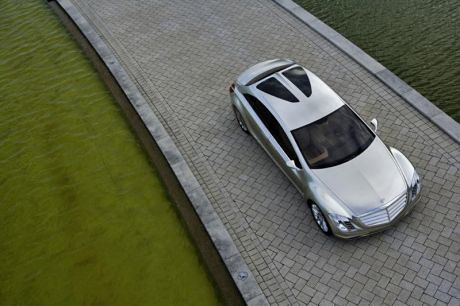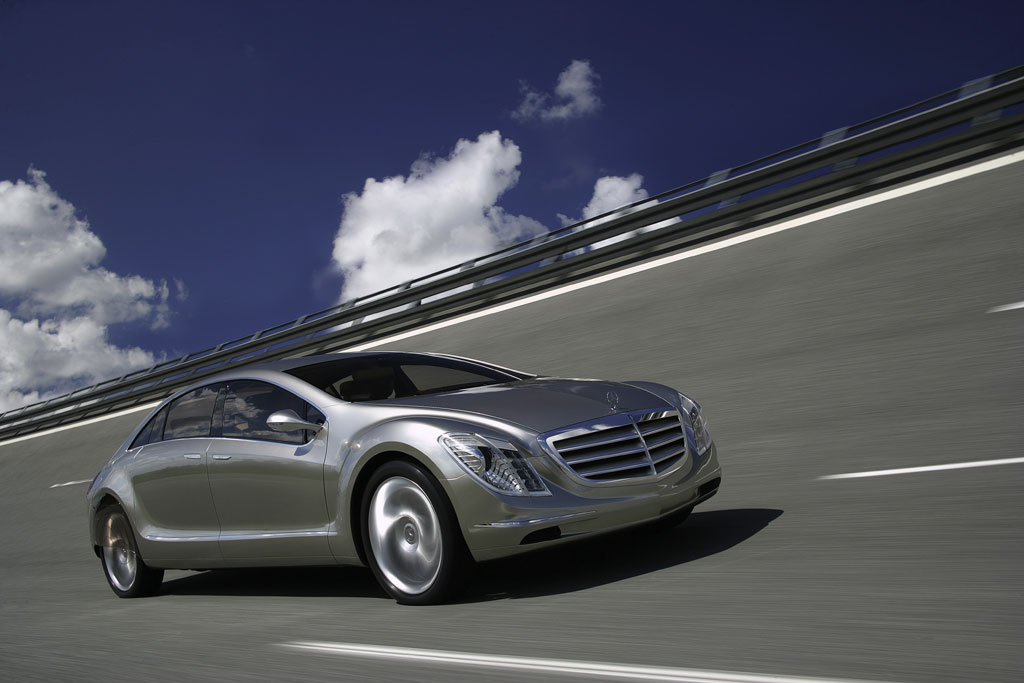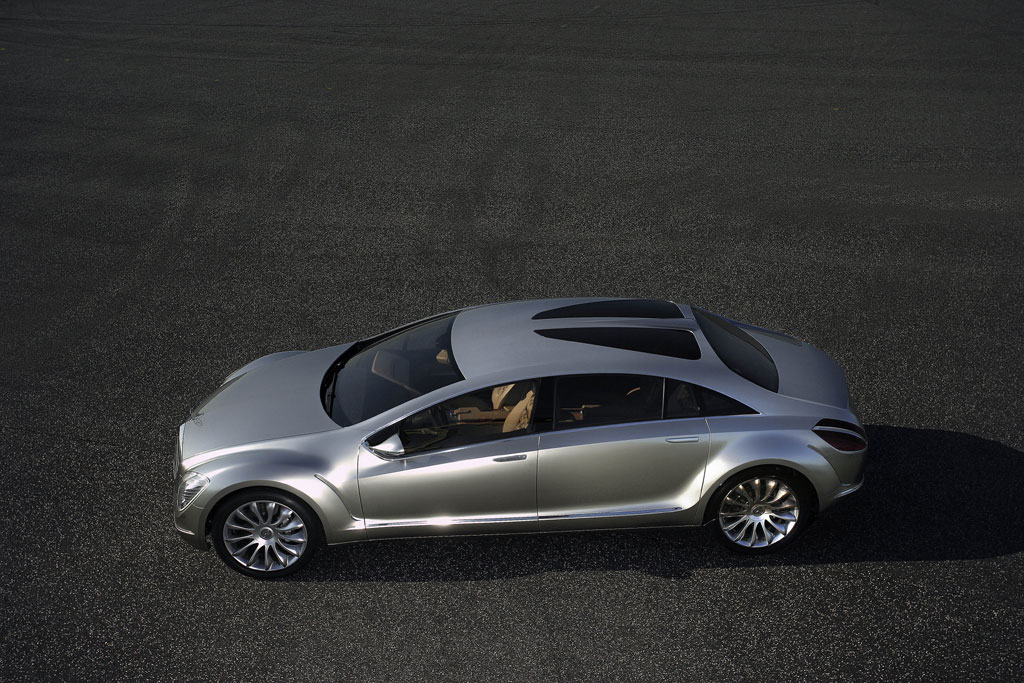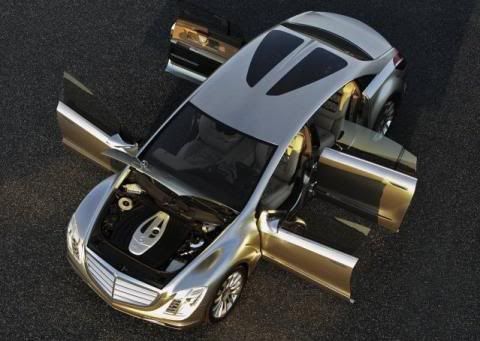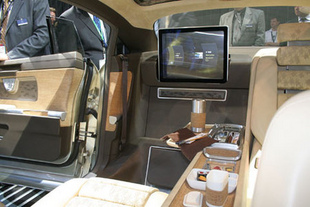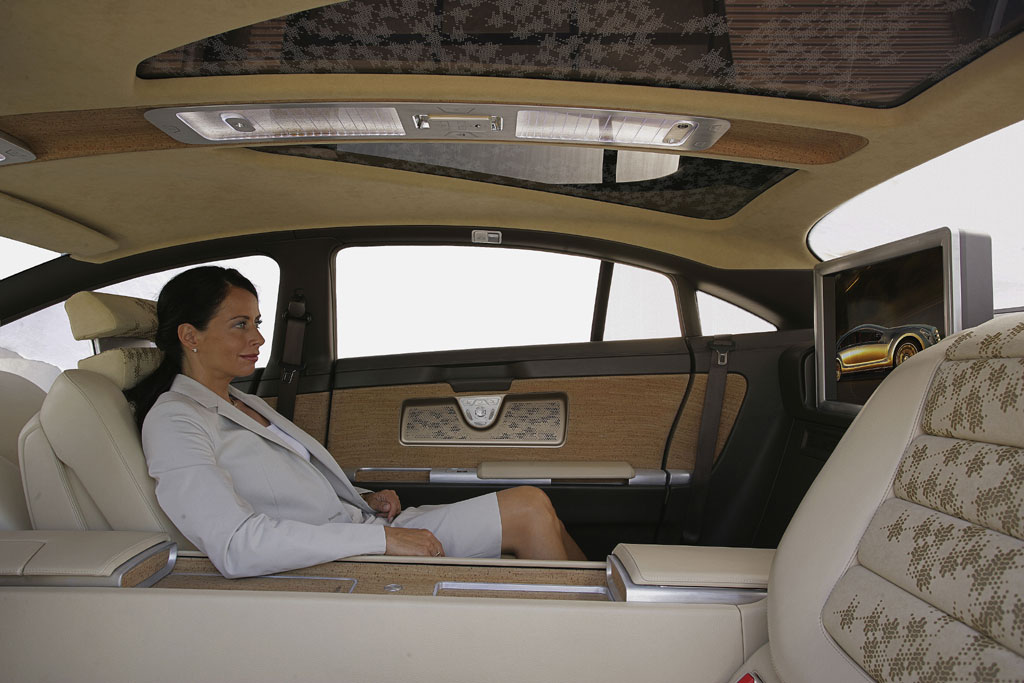

Mercedes-Benz F700 Concept
Specification | Reviews | Photos | Latest PriceMercedes-Benz F700 Concept
In the words of Professor Dr. Herbert Kohler, responsible for Group Research & Advanced Engineering Vehicle and Powertrain at DaimlerChrysler AG, "With the F 700, Mercedes-Benz shows what the big touring sedan of the future will look like. It offers environmentally compatible mobility combined with utmost comfort and an effortlessly superior drive.' With that, the F 700 meets the growing demands on luxury-class automobiles. The focus is on conserving resources and protecting the environment: low consumption, low CO2 emissions, low pollution levels. For in future there will continue to be considerable demand for the comfortable mobility provided by large sedans. Making this kind of mobility sustainable is a major responsibility which Mercedes-Benz faces up to in an all-out way. The F 700 is an unmistakable sign of this: as a research car it demonstrates with innovative approaches and technologies not only how resources can be conserved and the environment protected, but also how driver and passengers can be relieved of stress and can travel completely at ease. "Sustainable mobility only can be realized by intensive research and development. Technological progress is decisive for creating suitable products for an increasingly more critical world," says Professor Dr. Herbert Kohler.
The F 700 research car shows new ways to achieve resource-conserving mobility. The heart of the car is the novel drive system which combines the advantages of the low-emission spark-ignition engine with the consumption advantages of the diesel drive. The diesel engine's crucial advances to its current combination of dynamic performance and low fuel consumption were made possible by Turbocharging and common-rail direct injection - both pioneering achievements of Mercedes-Benz. The "DIESOTTO" drive takes this some decisive steps further: consistent downsizing through reduction of displacement and the number of cylinders makes for improved efficiency, and a hybrid module assists the internal combustion engine mainly in stop-and-go operation. Moreover, the diesel principle with controlled auto ignition (CAI) makes its debut in the spark-ignition engine.
On starting and at full load, the air-fuel mixture is not ignited by a sparkplug as in a conventional gasoline engine. The controlled auto ignition (homogeneous combustion) to which the DIESOTTO automatically reverts within its working cycle occurs under partial load conditions, i.e. at low and medium engine speeds. As a result of homogeneous combustion at reduced reaction temperatures, very low emissions of nitrogen oxides are produced. The rest of the emission control work in the DIESOTTO drive is handled by a standard three-way catalytic converter. In addition, in order to combine the individual subsystems into one drive concept, a highly efficient engine management and control system has been implemented. The drive unit of the F 700 is a compact four-cylinder with a displacement of 1.8 liters, and yet it ensures that feeling of effortless, superior power afforded by a luxury sedan: a two-stage Turbocharger system ensures good response and torquey pulling power. In addition, when the car moves off the internal combustion engine is assisted by the electric motor of the hybrid module. The maximum output is 175 kW (238 hp), the electric motor pitches in another 15 kW (20 hp), and the system's maximum torque is about 400 Newton meters. The 0 to 100 km/h (62 mph) sprint time of 7.5 seconds attests to the dynamics of the F 700, whose top speed is limited to 200 km/h. Despite these outstanding performance figures, the consumption of the F 700 in the standard cycle is only about 5.3 liters, equivalent to CO2 emissions of 127 grams per kilometer - extremely low for an automobile of this category.
Similar advances are made by the F 700 in the area of ride comfort. Mercedes-Benz has always been a leader in the area of road roar/tire vibration characteristics and suspension comfort: the Active Body Control suspension system in the CL-Class, S- and SL-Class sets the standard worldwide with its unrivaled combination of comfort, handling safety and dynamics. This system is now surpassed by the new technology of the F 700. For here, once again, the new research car takes an important step to the future: thanks to its active PRE-SCAN suspension, the vehicle not only responds with great sensitivity to roadway unevenness; more than that, it acts with foresight. PRE-SCAN uses two laser sensors in the front headlamp units as "eyes". They deliver a precise image of the condition of the roadway. Based on the image supplied by the laser sensors and the information on the vehicle state, the control unit figures out a specific strategy which the high-pressure hydraulics translate into precisely calculated fluid flows and pressures for each single wheel.
The exceptional efficiency of the overall concept of the F 700 is evident at first sight: its design is distinguished by soft, flowing forms. "Aqua Dynamic" is the name the designers have given to this design idiom with which they translated the flow dynamics of a fish into the design of an exceptional automobile. Besides, the design provides an immediately indication that much room has been given to the passengers. With an overall exterior length of 5.18 meters the F 700 is a little shorter than the current long-wheelbase version of the S-Class, but with its generously sized wheelbase of 3.45 meters the research car excels the production model by impressive 28.5 centimeters. The side view of the F 700 is marked by the tense curves of the roof contour and shoulder line. This sedan puts a new interpretation on a design theme of Mercedes-Benz, for the current CLS also displays such tense lateral lines. The distinctively shaped front wheel arches likewise are inspired by a current model - the S-Class. After all, even a research car is always a Mercedes-Benz and stands on the foundation of the automobile brand with the richest tradition in the world.
The headlamps of the F 700 are a futuristic interpretation of the Mercedes-typical twin-headlamp face. Two vertical rows of linear LED arrays with superposed lens have the function of driving lights. A third vertical row of single high-performance LEDs are the daytime driving lights. Together with the continuous contour lights they give the F 700 an unmistakable appearance even by night. The "eyes" of the F 700 are integrated into the headlamps: these laser scanners gather the roadway data for the active PRE-SCAN suspension. Unlike any conventional automobile this sedan "sees" the surface profile of the road ahead of it. The driver's door also "observes" its surroundings attentively. In the base of the mirror of this PRE-SCAN door there is a very compact laser scanner which examines the area in which the door swings open for any obstacles. If collisions threaten, the door is arrested by a controllable hydraulic cylinder.
The extremely spacious and flexible interior concept is manifested outwardly not only by the long wheelbase. Two large glazed areas in the roof also emphasize the spacious design. Owing to the use of natural materials like leather and cork and to a harmonious brown and beige color scheme, the interior makes an elegant and light impression and appears very up-scale. The right rear door of the F 700 is hinged at the rear. Reversing the direction in which the door opens makes it easier to get into the REVERSE seat - another innovation in the new Mercedes-Benz research car. The REVERSE seat is the heart of the new seating concept, a completely new design thought out for the right rear seat. It breaks up the firmly established seating arrangement of a sedan and instead permits individual seat and rest positions, both facing the direction of travel and in the opposite direction.
This provides the opportunity for very different kinds of use depending on the purpose and duration of travel. Four persons sit in the conventional way facing the direction of travel. If the front passenger seat is unoccupied, at the push of a button the right rear seat can be moved to a relax position. To do this one moves the front passenger seat forward and folds the backrest towards the dashboard. Another use is made possible by the special functionality of the REVERSE seat (right rear seat). A new type of mechanism allows the passenger to sit in reverse direction and look out the back. He can chat face to face with his neighbor, work, rest, or enjoy the audiovisual entertainment. A monitor with an overall diagonal display measurement of 51 centimeters and a surround sound system create a cinema atmosphere. More than anything else though, the monitor delivers fascinatingly deep images with its 3D technology.
The innovative operating concept conduces greatly to the clear, generous spatial impression: the displays of the information and control system are visible at the point farthest forward in the interior, but, optically, appear a bit further away, because at the bottom edge of the windshield there is a mirror; the display itself is horizontally retracted into the cockpit. This technology not only makes for a very clear and tidily arranged instrument panel. Owing to the bigger distance between the driver's eyes and the display as compared with a conventional cockpit, the need for the eyes to adapt their range for far and near vision is appreciably smaller. This reduces eye fatigue and makes a scientifically verified contribution to greater stress-relieving safety.
The SERVO-HMI of the F 700 presents itself in an appreciably improved version complemented by a special assistant. Operation of the navigation system, the communication systems and the telephone as well as the audio and entertainment systems is by means of the proven COMAND rotary/pushbutton controller, to which a slide function has been added. Preselections in the operating menu are made in three positions. The air conditioning system is operated by an additional touch-sensitive control. For more complex input operations, for innovative support there is an individual input assistant in the form of a virtual person, called an avatar in computerese. Such avatars are familiar from the internet world or computer games as electronic images representing real persons.
In the F 700 the avatar takes the shape of a young woman. She enters into verbal dialogue with the driver, asking for the desired destination in the navigation menu, for example, and confirming the voice input. It works the same way when you select someone to call from the phonebook or a desired radio station. This form of dialogue simplifies voice control for the driver and improves the system's voice recognition performance. Moreover, the scope of possible dialogue assistance functions can be enlarged almost without limit. For instance, the avatar as virtual assistant could access online databases from the vehicle via internet link, add items to the driver's appointments book, or read aloud important e-mails. Operation by voice dialogue minimizes distraction - after all, driving safety is always the most important concern at Mercedes-Benz.
Since the beginning of the 1980s Mercedes-Benz has introduced twelve research cars. This series of exciting and pioneering automobiles - from Auto 2000 in 1981 to the current F 700 - documents the resolution and foresight with which the Mercedes-Benz engineers delve into central topics of research and technology and develop innovative solutions for the future. Many systems in research cars that were considered revolutionary years ago are in use in Mercedes-Benz production cars today. They include, for example, the DISTRONIC proximity control. It was implemented for the first time in 1991 in the F 100 and premiered in series production in 1998 in the S-Class. The Active Body Control suspension system employed today in the CL-, S- and SL-Class is an example of successful technology transfer from research to production car, as are the windowbag and the active light function. The F 500 Mind provided the inspiration for further hybrid development. It combined the V8 diesel engine of an S-Class with an electric motor. At the time this duo was the most powerful, torquiest hybrid drive for a rear-wheel drive passenger car. The F 700 will continue down this path and show the way to series production for significant innovations in drive and comfort technology.
The F 700 research car shows new ways to achieve resource-conserving mobility. The heart of the car is the novel drive system which combines the advantages of the low-emission spark-ignition engine with the consumption advantages of the diesel drive. The diesel engine's crucial advances to its current combination of dynamic performance and low fuel consumption were made possible by Turbocharging and common-rail direct injection - both pioneering achievements of Mercedes-Benz. The "DIESOTTO" drive takes this some decisive steps further: consistent downsizing through reduction of displacement and the number of cylinders makes for improved efficiency, and a hybrid module assists the internal combustion engine mainly in stop-and-go operation. Moreover, the diesel principle with controlled auto ignition (CAI) makes its debut in the spark-ignition engine.
On starting and at full load, the air-fuel mixture is not ignited by a sparkplug as in a conventional gasoline engine. The controlled auto ignition (homogeneous combustion) to which the DIESOTTO automatically reverts within its working cycle occurs under partial load conditions, i.e. at low and medium engine speeds. As a result of homogeneous combustion at reduced reaction temperatures, very low emissions of nitrogen oxides are produced. The rest of the emission control work in the DIESOTTO drive is handled by a standard three-way catalytic converter. In addition, in order to combine the individual subsystems into one drive concept, a highly efficient engine management and control system has been implemented. The drive unit of the F 700 is a compact four-cylinder with a displacement of 1.8 liters, and yet it ensures that feeling of effortless, superior power afforded by a luxury sedan: a two-stage Turbocharger system ensures good response and torquey pulling power. In addition, when the car moves off the internal combustion engine is assisted by the electric motor of the hybrid module. The maximum output is 175 kW (238 hp), the electric motor pitches in another 15 kW (20 hp), and the system's maximum torque is about 400 Newton meters. The 0 to 100 km/h (62 mph) sprint time of 7.5 seconds attests to the dynamics of the F 700, whose top speed is limited to 200 km/h. Despite these outstanding performance figures, the consumption of the F 700 in the standard cycle is only about 5.3 liters, equivalent to CO2 emissions of 127 grams per kilometer - extremely low for an automobile of this category.
Similar advances are made by the F 700 in the area of ride comfort. Mercedes-Benz has always been a leader in the area of road roar/tire vibration characteristics and suspension comfort: the Active Body Control suspension system in the CL-Class, S- and SL-Class sets the standard worldwide with its unrivaled combination of comfort, handling safety and dynamics. This system is now surpassed by the new technology of the F 700. For here, once again, the new research car takes an important step to the future: thanks to its active PRE-SCAN suspension, the vehicle not only responds with great sensitivity to roadway unevenness; more than that, it acts with foresight. PRE-SCAN uses two laser sensors in the front headlamp units as "eyes". They deliver a precise image of the condition of the roadway. Based on the image supplied by the laser sensors and the information on the vehicle state, the control unit figures out a specific strategy which the high-pressure hydraulics translate into precisely calculated fluid flows and pressures for each single wheel.
The exceptional efficiency of the overall concept of the F 700 is evident at first sight: its design is distinguished by soft, flowing forms. "Aqua Dynamic" is the name the designers have given to this design idiom with which they translated the flow dynamics of a fish into the design of an exceptional automobile. Besides, the design provides an immediately indication that much room has been given to the passengers. With an overall exterior length of 5.18 meters the F 700 is a little shorter than the current long-wheelbase version of the S-Class, but with its generously sized wheelbase of 3.45 meters the research car excels the production model by impressive 28.5 centimeters. The side view of the F 700 is marked by the tense curves of the roof contour and shoulder line. This sedan puts a new interpretation on a design theme of Mercedes-Benz, for the current CLS also displays such tense lateral lines. The distinctively shaped front wheel arches likewise are inspired by a current model - the S-Class. After all, even a research car is always a Mercedes-Benz and stands on the foundation of the automobile brand with the richest tradition in the world.
The headlamps of the F 700 are a futuristic interpretation of the Mercedes-typical twin-headlamp face. Two vertical rows of linear LED arrays with superposed lens have the function of driving lights. A third vertical row of single high-performance LEDs are the daytime driving lights. Together with the continuous contour lights they give the F 700 an unmistakable appearance even by night. The "eyes" of the F 700 are integrated into the headlamps: these laser scanners gather the roadway data for the active PRE-SCAN suspension. Unlike any conventional automobile this sedan "sees" the surface profile of the road ahead of it. The driver's door also "observes" its surroundings attentively. In the base of the mirror of this PRE-SCAN door there is a very compact laser scanner which examines the area in which the door swings open for any obstacles. If collisions threaten, the door is arrested by a controllable hydraulic cylinder.
The extremely spacious and flexible interior concept is manifested outwardly not only by the long wheelbase. Two large glazed areas in the roof also emphasize the spacious design. Owing to the use of natural materials like leather and cork and to a harmonious brown and beige color scheme, the interior makes an elegant and light impression and appears very up-scale. The right rear door of the F 700 is hinged at the rear. Reversing the direction in which the door opens makes it easier to get into the REVERSE seat - another innovation in the new Mercedes-Benz research car. The REVERSE seat is the heart of the new seating concept, a completely new design thought out for the right rear seat. It breaks up the firmly established seating arrangement of a sedan and instead permits individual seat and rest positions, both facing the direction of travel and in the opposite direction.
This provides the opportunity for very different kinds of use depending on the purpose and duration of travel. Four persons sit in the conventional way facing the direction of travel. If the front passenger seat is unoccupied, at the push of a button the right rear seat can be moved to a relax position. To do this one moves the front passenger seat forward and folds the backrest towards the dashboard. Another use is made possible by the special functionality of the REVERSE seat (right rear seat). A new type of mechanism allows the passenger to sit in reverse direction and look out the back. He can chat face to face with his neighbor, work, rest, or enjoy the audiovisual entertainment. A monitor with an overall diagonal display measurement of 51 centimeters and a surround sound system create a cinema atmosphere. More than anything else though, the monitor delivers fascinatingly deep images with its 3D technology.
The innovative operating concept conduces greatly to the clear, generous spatial impression: the displays of the information and control system are visible at the point farthest forward in the interior, but, optically, appear a bit further away, because at the bottom edge of the windshield there is a mirror; the display itself is horizontally retracted into the cockpit. This technology not only makes for a very clear and tidily arranged instrument panel. Owing to the bigger distance between the driver's eyes and the display as compared with a conventional cockpit, the need for the eyes to adapt their range for far and near vision is appreciably smaller. This reduces eye fatigue and makes a scientifically verified contribution to greater stress-relieving safety.
The SERVO-HMI of the F 700 presents itself in an appreciably improved version complemented by a special assistant. Operation of the navigation system, the communication systems and the telephone as well as the audio and entertainment systems is by means of the proven COMAND rotary/pushbutton controller, to which a slide function has been added. Preselections in the operating menu are made in three positions. The air conditioning system is operated by an additional touch-sensitive control. For more complex input operations, for innovative support there is an individual input assistant in the form of a virtual person, called an avatar in computerese. Such avatars are familiar from the internet world or computer games as electronic images representing real persons.
In the F 700 the avatar takes the shape of a young woman. She enters into verbal dialogue with the driver, asking for the desired destination in the navigation menu, for example, and confirming the voice input. It works the same way when you select someone to call from the phonebook or a desired radio station. This form of dialogue simplifies voice control for the driver and improves the system's voice recognition performance. Moreover, the scope of possible dialogue assistance functions can be enlarged almost without limit. For instance, the avatar as virtual assistant could access online databases from the vehicle via internet link, add items to the driver's appointments book, or read aloud important e-mails. Operation by voice dialogue minimizes distraction - after all, driving safety is always the most important concern at Mercedes-Benz.
Since the beginning of the 1980s Mercedes-Benz has introduced twelve research cars. This series of exciting and pioneering automobiles - from Auto 2000 in 1981 to the current F 700 - documents the resolution and foresight with which the Mercedes-Benz engineers delve into central topics of research and technology and develop innovative solutions for the future. Many systems in research cars that were considered revolutionary years ago are in use in Mercedes-Benz production cars today. They include, for example, the DISTRONIC proximity control. It was implemented for the first time in 1991 in the F 100 and premiered in series production in 1998 in the S-Class. The Active Body Control suspension system employed today in the CL-, S- and SL-Class is an example of successful technology transfer from research to production car, as are the windowbag and the active light function. The F 500 Mind provided the inspiration for further hybrid development. It combined the V8 diesel engine of an S-Class with an electric motor. At the time this duo was the most powerful, torquiest hybrid drive for a rear-wheel drive passenger car. The F 700 will continue down this path and show the way to series production for significant innovations in drive and comfort technology.
Technical data
The most important data and performance figures:
F 700 Gasoline-powered
- Length (mm) 5180
- Width (mm) 1960
- Height (mm) 1438
- Wheelbase (mm) 3450
- Inertia weight class (kg) 1700
- Tires 195/50 R21
- Displacement (l) 1.8l
- Rated power DIESOTTO 175 kW/238 hp
- + electric motor + 15 kW/20 hp
- Max. torque 400 Nm
- Acceleration 0–100 km/h 7.5 sec
- Top speed, governed 200 km/h
- Consumption* 5.3 l/100 km
- CO2 emissions 127 g/km
- Emission rating EU6
The design
New forms for an exceptionally comfortable and efficient automobile
- Flowing lines as expression of dynamics and efficiency
- Long wheelbase determines the proportions
- Interior enhances personal freedom in a completely new way
Advanced Design means giving shape to the future at Mercedes-Benz. Technically, every research car is a laboratory on wheels which, with new concepts, gives initial answers to the question of the further development of mobility. Parallel to this, Advanced Design as part of the Design unit of the Mercedes Car Group pursues research into the styling of the future: What trends in technology and society will change our perceptions of the automobile in the next years and decades? What messages should cars send out through their design to the world around them in future? And with what stylistic devices can the design idiom of Mercedes-Benz be refined and supplemented? “The research cars might be called the free program of the Design unit. The impact of formal elements can be tested in them without having a direct bearing on a coming production vehicle,” says Professor Peter Pfeiffer, Senior Vice President Design, Mercedes Car Group.
But one aspiration always is the focus of attention: a research car should embody all brand values of a Mercedes-Benz. The preview of things to come always must be designed against the backdrop and with the awareness of being the most tradition-steeped automobile brand in the world. This applies to the F 700 even more so than to its predecessors in the line of research cars: the F 700 does, after all, represent classic core competencies of the brand Mercedes-Benz as a superior touring sedan – comfortable transportation in an unperturbed style especially over long distances, and at the same time a befitting and altogether status-conscious manner.
The exterior design: Inspired by nature
The F 700 is a futuristic interpretation of the classic sedan theme. It combines generous spaciousness and outstanding comfort with a claim to particular environmental friendliness and intelligent communication through the innovative control and display concept. In its design, inspirations from nature join together with consciously displayed technical innovations. Flowing, smooth surfaces and precise, tense lines merge into a harmonious overall shape – the embodiment of an automobile which is as efficient as it is luxurious.
The styling of the F 700 took shape in the Mercedes-Benz Advanced Design Studio in Irvine, California. The basic form of the F 700 unmistakably is inspired by nature. As already had been practiced in the Mercedes-Benz bionic car, a 2005 concept car, ideas and construction principles from nature were adopted. “Aqua Dynamic” is what the designers term this design idiom. As direct quote a “back fin” adorns the roof; it is used for antennas, the reversing camera and the third brake light.
The very first glimpse of the F 700 shows that an extraordinary amount of space has been given to the occupants here – technology takes a back seat as it were. The silhouette is dominated by the unusually long wheelbase: with overall length being 5.18 meters, the distance between axles attains the imposing length of 3.45 meters. For comparison: the overall length of the F 700 makes it shorter than the long-wheelbase version of the current S-Class, but the F 700 wheelbase exceeds that of the current model by impressive 28.5 centimeters. The front end is correspondingly short – the particularly compact DIESOTTO drive makes this possible.
Tense lines create stretched elegance
The side view is defined by highly tense curves. This is true of the roof contour, but especially of the concise shoulder line: it starts out by continuing the line created by the front wheel arch a short way, and then carries over in a sweeping curve to the rear end. This tense line gives the F 700, painted in ALU-BEAM technique in the color gold, its dynamism and elegance.
The distinctive front fenders likewise are inspired by a current production model, the S-Class. But here again the theme has been taken further and the fenders have been very distinctly sculpted. The side skirts are gently integrated into the flowing forms. The door handles are recessed and the exterior mirrors are little works of art – nothing should unnecessarily resist the flow of air. The 21-inch wheels are designed like turbine blades. Luminescent strips on the wheel arches emphasize the contours and size of the tires. The transparent cover over the rear wheels enhances aerodynamic efficiency.
It is not only the long wheelbase which provides an indication of the unusual, extremely spacious and flexible interior concept – before one even sees the inside. The two large glazed areas in the roof, as a transparent link between inside and out, are suggestive of the inside breadth which the interior conveys. A special feature is the right rear door: whereas the three other doors open conventionally (hinges at the forward edge, handles at the rear), the fourth door is hinged at the rear. This facilitates boarding and leaving for the passenger when the REVERSE seat is positioned opposite the direction of travel.
Despite the futuristic design idiom, the F 700 definitely is a Mercedes-Benz. An essential element of the brand identity is the clear-cut radiator grille, which emphasizes elegance and status. No other manufacturer has refined the radiator grille over the decades with such consistency as Mercedes-Benz.
The headlamp units also clearly follow the styling tradition of Mercedes-Benz. Despite highly innovative elements like laser scanners or LED driving lights they take up the twin-headlamp motif and interpret it in a vertical form with sophisticated stylistic devices. The laser scanners that gather roadway data for the active PRE-SCAN suspension are positioned on the outside. They make the light units veritable eyes of the vehicle: different from any conventional automobile the F 700 “sees” and reads the condition of the road ahead.
Looks that reveal a strong character, by day or night
Visually separated from the laser scanner by a painted rib is the driving light function employing all LED technology. The light units consisting of linear LED arrays are arranged in two vertical rows. Each linear LED array has a lens superposed. A third vertical row of individual high-performance LEDs functions as daytime driving light. Together with the wraparound contour lights they give the F 700 an unmistakable appearance even by night.
The rear end completes the flowing silhouette of the F 700. The C-pillars are drawn far back and the backlight is inserted at a shallow angle. The lightly formed wheel arches and the gently molded trunk lid in turn bridge the gap between the rich history of the Mercedes-Benz brand and its future. The rear end is inspired by the vehicles of the 1940s and 1950s, but is reinterpreted with stylistic devices of the present and future: the tail lights take up the vertical LED light strips of the headlamps, the integral spoiler lip is aerodynamically optimized, and finally the diffusor in the rear apron permits the efficient treatment of air flow.
Interior design: Harmonic balance between technology and nature
The very first glance into the interior of the F 700 conveys a clear message: comfortable travel and well-being are interpreted in a completely new way on board this vehicle. The spacious interior, the innovative, multifunctional configuration of the seats, or the use of elegant but natural materials enable an extremely relaxed form of transportation.
Resource-conserving mobility will gain ever increasing significance in future according to the analyses of the DaimlerChrysler futurologists. The conservation of energy reserves refers not only to fuel and the environment, but just as much to the well-being of the passengers: For many people, the distances they cover will not increase, but the time they spend on the road will. The traffic in the rapidly growing megacities of this planet calls for mobile living spaces which afford highest comfort on wheels.
An essential component of this well-being is the freedom of movement inside the vehicle and the possible seating alternatives. The F 700 breaks up the conventional, rigid seating order of the touring sedan (with its two seats in the first row and two more in the back). The heart of the novel seat concept in the Mercedes-Benz research car is the REVERSE seat – a completely new design thought out for the right rear seat, permitting individual seat positions both facing the direction of travel and in the opposite direction.
So the interior offers very different possibilities for use: Four persons sit in the conventional manner facing the direction of travel. When the front passenger seat is unoccupied it can be moved all the way forward to its park position to create room for the relax mode: extremely large legroom, a large footrest and a tilted REVERSE seat ensure relaxed travel even over long distances.
The automobile as a private room
At the push of a button the innovative seat swivels in the opposite direction: The back seat passenger no longer looks to the front, but turns his attention away from the road. He “retires”, can hold a confidential chat face to face with his companion on the left rear seat. He can work, enjoy the entertainment program or simply take a rest. Owing to the REVERSE seat’s variability, this sedan affords entirely new freedoms for traveling in complete ease.
Of course, the high-quality, elegant and light interior design of the F 700 also conduces to relaxed travel. It thrives on the tension between clear-cut, direct forms and organic, living surfaces; it displays harmony in its colors and variation in its materials. The blueprint from the Advanced Design Studio in Como, Italy, interprets the future of the luxurious sedan in warm colors, in harmonious brown and beige tones, combining “technical” surfaces with surfaces featuring natural materials like cork and leather.
The innovative technology in the F 700 creates the basis for the impression of spaciousness and clarity: the innovative SERVO display at the base of the windshield employs mirror reflection technology to render the massive hood of a conventional instrument panel superfluous. The cockpit is shallow and low-profile. And owing to the radically simplified control and display concept, the number of switches is reduced to a minimum. The slim hood at the front, at the windshield, is used entirely as an outlet for the draft-free automatic climate control.
Inner harmony of colors and materials
The balance and harmony of the color scheme is the result of a combination of brown leather, matching Alcantara and open-pored cork for the door liners, the roof lining or the center console, which runs all the way through the interior. The seats are upholstered in beige leather with middle portions in matching Alcantara. Painted aluminum can be found on all operating panels and the SERVO-HMI.
Transformation by the REVERSE seat
The trick of changing around the interior with the REVERSE seat is accomplished at the push of a button: the front passenger seat moves all the way forward into its parking position; as it does so the backrest partly folds down into the cockpit. Huge legroom now is available to the right rear passenger. A footrest can be extended and the entire seat can be placed in a flat relax position.
But the REVERSE can do much more. As the front passenger seat moves forward the REVERSE seat also travels about 60 centimeters forward and does an elegant “backward roll”. What was previously the seatback becomes a cushion, and the seat cushion rises up and together with the headrest becomes a backrest.
The design of the REVERSE seat also took some doing. The backrest of a seat is always appreciably longer than the seat cushion. The two seat halves of the REVERSE seat are identical, each consisting of five flexibly connected elements. A well-thought-out mechanism pushes these segments apart as soon as they are used as a backrest, with the outer segment then serving as head restraint. In the opposite direction, an electric motor pulls the segments together again to create a closed surface as soon as they are used as a seat cushion.
The most important data and performance figures:
F 700 Gasoline-powered
- Length (mm) 5180
- Width (mm) 1960
- Height (mm) 1438
- Wheelbase (mm) 3450
- Inertia weight class (kg) 1700
- Tires 195/50 R21
- Displacement (l) 1.8l
- Rated power DIESOTTO 175 kW/238 hp
- + electric motor + 15 kW/20 hp
- Max. torque 400 Nm
- Acceleration 0–100 km/h 7.5 sec
- Top speed, governed 200 km/h
- Consumption* 5.3 l/100 km
- CO2 emissions 127 g/km
- Emission rating EU6
The design
New forms for an exceptionally comfortable and efficient automobile
- Flowing lines as expression of dynamics and efficiency
- Long wheelbase determines the proportions
- Interior enhances personal freedom in a completely new way
Advanced Design means giving shape to the future at Mercedes-Benz. Technically, every research car is a laboratory on wheels which, with new concepts, gives initial answers to the question of the further development of mobility. Parallel to this, Advanced Design as part of the Design unit of the Mercedes Car Group pursues research into the styling of the future: What trends in technology and society will change our perceptions of the automobile in the next years and decades? What messages should cars send out through their design to the world around them in future? And with what stylistic devices can the design idiom of Mercedes-Benz be refined and supplemented? “The research cars might be called the free program of the Design unit. The impact of formal elements can be tested in them without having a direct bearing on a coming production vehicle,” says Professor Peter Pfeiffer, Senior Vice President Design, Mercedes Car Group.
But one aspiration always is the focus of attention: a research car should embody all brand values of a Mercedes-Benz. The preview of things to come always must be designed against the backdrop and with the awareness of being the most tradition-steeped automobile brand in the world. This applies to the F 700 even more so than to its predecessors in the line of research cars: the F 700 does, after all, represent classic core competencies of the brand Mercedes-Benz as a superior touring sedan – comfortable transportation in an unperturbed style especially over long distances, and at the same time a befitting and altogether status-conscious manner.
The exterior design: Inspired by nature
The F 700 is a futuristic interpretation of the classic sedan theme. It combines generous spaciousness and outstanding comfort with a claim to particular environmental friendliness and intelligent communication through the innovative control and display concept. In its design, inspirations from nature join together with consciously displayed technical innovations. Flowing, smooth surfaces and precise, tense lines merge into a harmonious overall shape – the embodiment of an automobile which is as efficient as it is luxurious.
The styling of the F 700 took shape in the Mercedes-Benz Advanced Design Studio in Irvine, California. The basic form of the F 700 unmistakably is inspired by nature. As already had been practiced in the Mercedes-Benz bionic car, a 2005 concept car, ideas and construction principles from nature were adopted. “Aqua Dynamic” is what the designers term this design idiom. As direct quote a “back fin” adorns the roof; it is used for antennas, the reversing camera and the third brake light.
The very first glimpse of the F 700 shows that an extraordinary amount of space has been given to the occupants here – technology takes a back seat as it were. The silhouette is dominated by the unusually long wheelbase: with overall length being 5.18 meters, the distance between axles attains the imposing length of 3.45 meters. For comparison: the overall length of the F 700 makes it shorter than the long-wheelbase version of the current S-Class, but the F 700 wheelbase exceeds that of the current model by impressive 28.5 centimeters. The front end is correspondingly short – the particularly compact DIESOTTO drive makes this possible.
Tense lines create stretched elegance
The side view is defined by highly tense curves. This is true of the roof contour, but especially of the concise shoulder line: it starts out by continuing the line created by the front wheel arch a short way, and then carries over in a sweeping curve to the rear end. This tense line gives the F 700, painted in ALU-BEAM technique in the color gold, its dynamism and elegance.
The distinctive front fenders likewise are inspired by a current production model, the S-Class. But here again the theme has been taken further and the fenders have been very distinctly sculpted. The side skirts are gently integrated into the flowing forms. The door handles are recessed and the exterior mirrors are little works of art – nothing should unnecessarily resist the flow of air. The 21-inch wheels are designed like turbine blades. Luminescent strips on the wheel arches emphasize the contours and size of the tires. The transparent cover over the rear wheels enhances aerodynamic efficiency.
It is not only the long wheelbase which provides an indication of the unusual, extremely spacious and flexible interior concept – before one even sees the inside. The two large glazed areas in the roof, as a transparent link between inside and out, are suggestive of the inside breadth which the interior conveys. A special feature is the right rear door: whereas the three other doors open conventionally (hinges at the forward edge, handles at the rear), the fourth door is hinged at the rear. This facilitates boarding and leaving for the passenger when the REVERSE seat is positioned opposite the direction of travel.
Despite the futuristic design idiom, the F 700 definitely is a Mercedes-Benz. An essential element of the brand identity is the clear-cut radiator grille, which emphasizes elegance and status. No other manufacturer has refined the radiator grille over the decades with such consistency as Mercedes-Benz.
The headlamp units also clearly follow the styling tradition of Mercedes-Benz. Despite highly innovative elements like laser scanners or LED driving lights they take up the twin-headlamp motif and interpret it in a vertical form with sophisticated stylistic devices. The laser scanners that gather roadway data for the active PRE-SCAN suspension are positioned on the outside. They make the light units veritable eyes of the vehicle: different from any conventional automobile the F 700 “sees” and reads the condition of the road ahead.
Looks that reveal a strong character, by day or night
Visually separated from the laser scanner by a painted rib is the driving light function employing all LED technology. The light units consisting of linear LED arrays are arranged in two vertical rows. Each linear LED array has a lens superposed. A third vertical row of individual high-performance LEDs functions as daytime driving light. Together with the wraparound contour lights they give the F 700 an unmistakable appearance even by night.
The rear end completes the flowing silhouette of the F 700. The C-pillars are drawn far back and the backlight is inserted at a shallow angle. The lightly formed wheel arches and the gently molded trunk lid in turn bridge the gap between the rich history of the Mercedes-Benz brand and its future. The rear end is inspired by the vehicles of the 1940s and 1950s, but is reinterpreted with stylistic devices of the present and future: the tail lights take up the vertical LED light strips of the headlamps, the integral spoiler lip is aerodynamically optimized, and finally the diffusor in the rear apron permits the efficient treatment of air flow.
Interior design: Harmonic balance between technology and nature
The very first glance into the interior of the F 700 conveys a clear message: comfortable travel and well-being are interpreted in a completely new way on board this vehicle. The spacious interior, the innovative, multifunctional configuration of the seats, or the use of elegant but natural materials enable an extremely relaxed form of transportation.
Resource-conserving mobility will gain ever increasing significance in future according to the analyses of the DaimlerChrysler futurologists. The conservation of energy reserves refers not only to fuel and the environment, but just as much to the well-being of the passengers: For many people, the distances they cover will not increase, but the time they spend on the road will. The traffic in the rapidly growing megacities of this planet calls for mobile living spaces which afford highest comfort on wheels.
An essential component of this well-being is the freedom of movement inside the vehicle and the possible seating alternatives. The F 700 breaks up the conventional, rigid seating order of the touring sedan (with its two seats in the first row and two more in the back). The heart of the novel seat concept in the Mercedes-Benz research car is the REVERSE seat – a completely new design thought out for the right rear seat, permitting individual seat positions both facing the direction of travel and in the opposite direction.
So the interior offers very different possibilities for use: Four persons sit in the conventional manner facing the direction of travel. When the front passenger seat is unoccupied it can be moved all the way forward to its park position to create room for the relax mode: extremely large legroom, a large footrest and a tilted REVERSE seat ensure relaxed travel even over long distances.
The automobile as a private room
At the push of a button the innovative seat swivels in the opposite direction: The back seat passenger no longer looks to the front, but turns his attention away from the road. He “retires”, can hold a confidential chat face to face with his companion on the left rear seat. He can work, enjoy the entertainment program or simply take a rest. Owing to the REVERSE seat’s variability, this sedan affords entirely new freedoms for traveling in complete ease.
Of course, the high-quality, elegant and light interior design of the F 700 also conduces to relaxed travel. It thrives on the tension between clear-cut, direct forms and organic, living surfaces; it displays harmony in its colors and variation in its materials. The blueprint from the Advanced Design Studio in Como, Italy, interprets the future of the luxurious sedan in warm colors, in harmonious brown and beige tones, combining “technical” surfaces with surfaces featuring natural materials like cork and leather.
The innovative technology in the F 700 creates the basis for the impression of spaciousness and clarity: the innovative SERVO display at the base of the windshield employs mirror reflection technology to render the massive hood of a conventional instrument panel superfluous. The cockpit is shallow and low-profile. And owing to the radically simplified control and display concept, the number of switches is reduced to a minimum. The slim hood at the front, at the windshield, is used entirely as an outlet for the draft-free automatic climate control.
Inner harmony of colors and materials
The balance and harmony of the color scheme is the result of a combination of brown leather, matching Alcantara and open-pored cork for the door liners, the roof lining or the center console, which runs all the way through the interior. The seats are upholstered in beige leather with middle portions in matching Alcantara. Painted aluminum can be found on all operating panels and the SERVO-HMI.
Transformation by the REVERSE seat
The trick of changing around the interior with the REVERSE seat is accomplished at the push of a button: the front passenger seat moves all the way forward into its parking position; as it does so the backrest partly folds down into the cockpit. Huge legroom now is available to the right rear passenger. A footrest can be extended and the entire seat can be placed in a flat relax position.
But the REVERSE can do much more. As the front passenger seat moves forward the REVERSE seat also travels about 60 centimeters forward and does an elegant “backward roll”. What was previously the seatback becomes a cushion, and the seat cushion rises up and together with the headrest becomes a backrest.
The design of the REVERSE seat also took some doing. The backrest of a seat is always appreciably longer than the seat cushion. The two seat halves of the REVERSE seat are identical, each consisting of five flexibly connected elements. A well-thought-out mechanism pushes these segments apart as soon as they are used as a backrest, with the outer segment then serving as head restraint. In the opposite direction, an electric motor pulls the segments together again to create a closed surface as soon as they are used as a seat cushion.
Mercedes-Benz F700 Concept Price Is over $2 million
